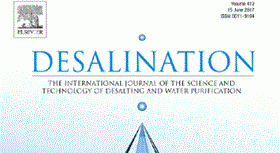Summary
Access to an improved water supply is essential for health. The water safety plan (WSP) approach developed by the World Health Organization (WHO) can provide safe drinking water. This study evaluated the progress of the Garmsar drinking water supply system (DWSS) through WSP. First, using the WSP quality assurance (QA) tool and its checklist, the implementation rate of this approach was examined. After classifying the most critical risks, the reliability of the risks was obtained with intra-class correlation coefficient (ICC), and then the risks were prioritized and evaluated by the semi-quantitative matrix recommended by WHO. The results showed that 80.4% of the drinking water was supplied from the system under study, and six persons (13.95%) participated in the implementation of the WSP team. The “system description” and “verification” steps with scores of 75% and 65%, respectively, had the highest levels of compliance, and the “supporting programs” and “review of the WSP” steps with scores of 29% and 25%, respectively, had the least consistent with
WSP. The points obtained by the catchment, treatment, distribution, and point of use were 43%, 38%, 35%, and 35%, respectively. Risk identification demonstrated that “direct discharge of wastewater/sewage in the sources by the villagers living in the basin in the catchment area” had poor reliability (ICC = 0.25), and so it was discarded. The risk assessment of the DWSS identified the “microbial contamination, pesticides, and fertilizer caused by agricultural use and activities in the catchment area” as high-risk. The lack of implementation of some steps in this program prevented the realization of many goals of this approach. The awareness of drinking water supply organizations with the aims and benefits of this program and increasing the skill of the WSP team can enhance these conditions



No responses yet